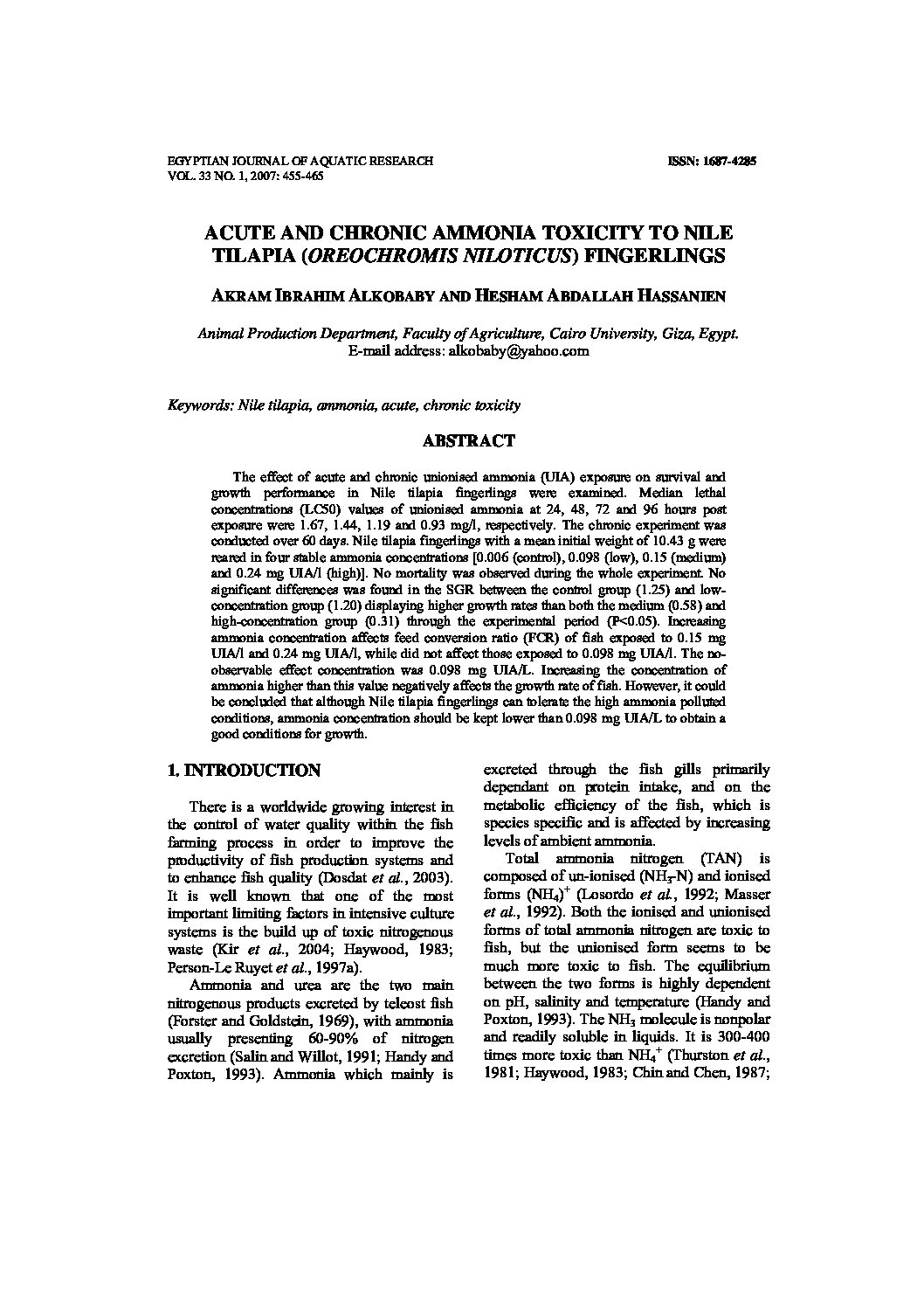Categories
vol-33INVESTIGATION OF THE CURRENT STATUS OF POLLUTION
AND ITS ROOT CAUSES IN A PORT, WEST OF DAMITTA CITY,
EGYPT
ALSNOSY BALBAA*, ALI I. BELTAGY** AND JAYANTHA. P. LIYANANGE***
*Arab Academy for Science, Technology and Maritime Transport Alexandria, Egypt
**National Institute of Oceanography and fisheries, Alexandria, Egypt
***Faculty of science and technology University of Stavanger, Stavanger Norway
[email protected], [email protected], [email protected]
Keywords: Grain size, sediment, petroleum, hydrocarbons, Heavy metals, pollution, navigation
channel.
ABSTRACT
The A port is a marine port lying just west of Damietta City on the coast of Nile Delta,
Egypt. The port is almost a closed-water basin that is subject to many forms of pollution.
To evaluate the extent of pollution problem and propose feasible mitigation, measures, an
intensive study was carried out. Water and sediment samples were collected at several
localities inside and outside the port’s basin, and these were analyzed for the following:
Total Petroleum Hydrocarbons Content (surface water, and bottom sediment), Heavy metals
(Fe, Cu, Zn, Pb, and Cd) in bottom sediment, and Grain size distribution (bottom sediment).
The sediment samples analyzed comprised both the surface layer of bottom sediment, and
sediments down two short cores. The total petroleum hydrocarbons contents in surface
seawater ranged between 14.54 and 65.46 µg/l with an average of 28.66 µg/l. The surface
layer of bottom sediment, exhibited concentrations between 0.156 and 4.163 with an
average of 1.443 µg/g. In core No. 1 (station No. 9–General Cargo & Cement Terminal),
the total hydrocarbons ranged between 4.16 µg/g at the 0-5 cm level and 80.248 µg/g at the
10-15 cm level. Core No. 2 (station No. 6–Ro-Ro Terminal), showed values between 1.85
µg/g at the 0-5 cm level and 12.432 µg/g at 10-15 cm level. The heavy metals (Fe, Zn, Cu,
Pb, and Cd) were detected in surface sediments of all stations with an average of 1780 µg/g
for Fe, 40.05 µg/g for Zn, 14.75 µg/g for Cu, 3.1 µg/g for Pb, and 0.014 µg/g for Cd. In
core samples, the same metals showed increasing levels with depth in cores. The results
point to anthropogenic contributions from different activities in the General Cargo &
Cement Terminal (cargo operations and ship activities) to marine environment in the port’s
basin. The results indicate that the major sources of pollution are the shipping activities,
and to a lesser extent the freshwater canal from the Nile branch, agricultural and industrial
activities nearby the port and land-based activities inside the port as well. The study also
indicates that no surface water transport of pollutants takes place from nearby areas outside
the basin. The results of the study provide a useful tool for establishing an environmental
management strategy for the port.







